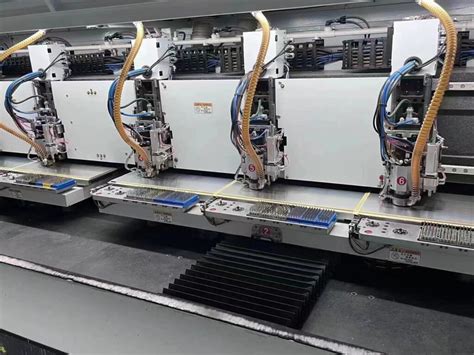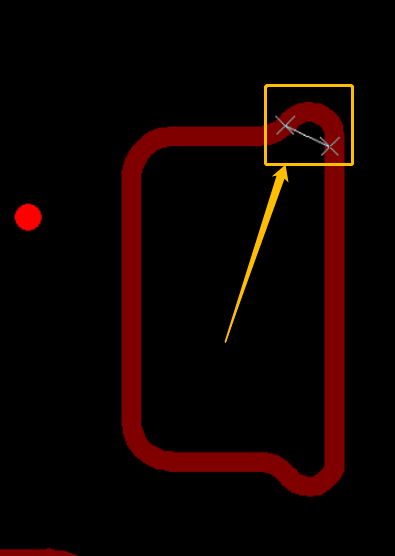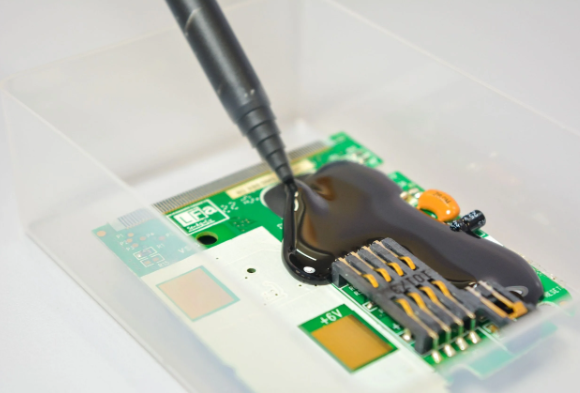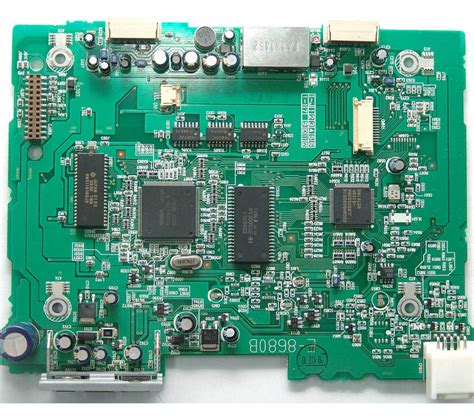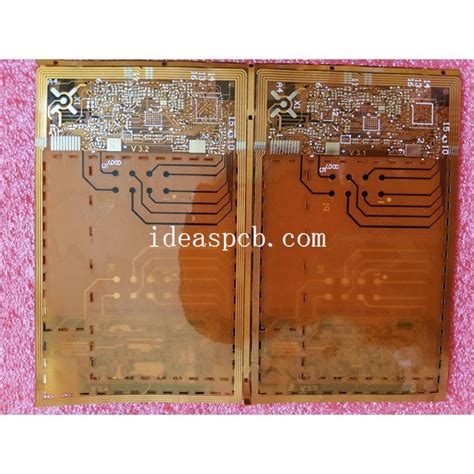Accelerating Innovation: The Rise of Fast Turn PCB Production
Key Takeaways
In today’s fast-paced technology landscape, understanding the dynamics of fast turn PCB production is crucial for those in the pcb manufacturing business. This innovation not only caters to the immediate needs of consumers but also plays a critical role in how you approach pcb manufacturing. With an emphasis on speed, PCB manufacturing companies are adapting to meet the growing demand for efficiency. The pcb manufacturing cost is often a concern, yet fast production techniques frequently lead to lower overall expenses due to reduced lead times and enhanced workflow efficiency. Furthermore, having quick access to prototypes allows you to iterate designs rapidly—this iterative process is essential for driving innovation in your projects. By leveraging these fast turn capabilities, your business can streamline operations, improve product quality, and ultimately achieve a competitive edge in the market. As you explore these advancements, consider how they can impact your approach to electronics and reshape your strategies within the PCB manufacturing sector.
The Evolution of PCB Production: A Historical Perspective
The journey of PCB manufacturing is marked by significant milestones that have shaped the landscape of electronics. Initially, the process was labor-intensive, relying heavily on manual techniques. Early PCB manufacturing companies utilized basic materials and rudimentary equipment, which limited production capabilities and hampered innovation. As the industry progressed, advancements in technology led to more automated processes. This transition not only improved the precision of PCB manufacturing but also reduced the overall pcb manufacturing cost.
Fast forward to today, and the rise of digital technologies has further revolutionized pcb manufacturing business practices. New methods have emerged that allow for swift iterations and rapid prototyping, enabling innovators to test ideas without incurring prohibitive costs or delays. Table 1 shows a timeline highlighting major milestones in PCB production:
| Year | Milestone |
|---|---|
| 1936 | First use of PCBs in radios |
| 1950s | Introduction of automatic PCB assembly techniques |
| 1980s | Enhanced Printed Circuit Boards with surface mount technology |
| 2000s | Development of rapid prototyping methods |
“The evolution of PCB production is a testament to human ingenuity, providing us with tools to turn ideas into reality faster than we ever thought possible.”
By understanding this historical context, you can appreciate how far pcb manufacturing has come and how it continues to evolve in response to modern demands for speed and efficiency. The foundation laid by previous innovations paves the way for today’s fast turn capabilities, making it an exciting time for both new entrants in the sector and established players looking to refine their processes.
Key Technologies Driving Fast Turn PCB Production
In the realm of pcb manufacturing, several key technologies are propelling the rapid evolution of production capabilities. First and foremost, advancements in automated fabrication have significantly shortened the manufacturing cycle, allowing pcb manufacturing companies to streamline their processes. This automation not only reduces human error but also enhances precision in component placement and soldering, vital for high-density designs. Additionally, the integration of advanced CAD software has transformed how engineers design and simulate circuits. With these tools, you can easily iterate designs and conduct virtual testing before moving to production, ultimately decreasing pcb manufacturing costs.
Moreover, technologies such as laser etching and 3D printing have further empowered rapid prototyping within pcb manufacturing businesses. They enable you to create intricate designs quickly while maintaining high fidelity, allowing faster adjustments based on real-time feedback from market testing or client needs. These innovations offer immense flexibility in material choices and construction methods, making it easier for your business to adapt new ideas swiftly.
As you look into how these technologies can benefit your projects, consider how they not only influence speed but also enhance quality assurance processes through real-time monitoring systems that improve overall product reliability. By leveraging these enhanced techniques in your operations, you position your company at the forefront of fast turn PCB production—an area that continues to shape the future landscape of electronics innovation.
The Benefits of Rapid Prototyping for Innovators
In today’s fast-paced world, the ability to innovate quickly is essential for any business, especially those involved in pcb manufacturing. Rapid prototyping has become a cornerstone for innovators seeking to turn their ideas into tangible products without the usual delays associated with traditional manufacturing processes. By leveraging pcb manufacturing companies that specialize in expedited services, you can significantly reduce the time it takes to develop prototypes, allowing for a more aggressive approach to product development. This swift turnaround not only minimizes the overall pcb manufacturing cost, but also fosters an environment where testing and iterating on designs is both feasible and efficient. The flexibility offered by rapid prototyping empowers you to experiment with various designs and functionalities, ensuring that your final product meets market demands while adhering to industry standards. Consequently, if you’re looking to maintain a competitive edge in your pcb manufacturing business, embracing rapid prototyping is no longer just an option; it’s a necessity that directly influences your ability to respond swiftly to changes and opportunities in the market.
Case Studies: Success Stories in Fast Turn PCB Implementation
Fast turn PCB manufacturing has transformed the way businesses approach product development, leading to significant success stories across various industries. Consider how tech startups have harnessed the capabilities of PCB manufacturing companies to create innovative solutions in record time. For instance, a small electronics firm managed to reduce their PCB manufacturing cost by 30% by partnering with a provider specializing in rapid prototyping. This allowed them not only to optimize their production processes but also to iterate on designs more efficiently, leading to an impressive time-to-market advantage.
Moreover, established companies are reaping the benefits as well; a major automotive player recently showcased their ability to implement complex designs in less than two weeks, which typically would have taken months. By leveraging the efficiencies of fast turn PCB production, they could adapt to changing market demands more swiftly than their competitors, ultimately bolstering their position in the industry.
These success stories illustrate that embracing fast turn PCB methodologies does not merely streamline development; it can also cultivate a culture of innovation within your organization. Each project exemplifies how fast turn PCB implementation is not just about speed but about reshaping approaches towards engineering and marketing strategies that align with modern consumer expectations.
To learn more about advancements in this field and how you can benefit your business through innovative sourcing and manufacturing strategies, visit Andwin PCB.
Overcoming Challenges in Accelerated PCB Manufacturing
In the pursuit of fast turn PCB production, you will encounter various challenges that can impact your pcb manufacturing efforts. One primary hurdle is the delicate balance between speed and quality; while expedited processes can shorten lead times, maintaining high standards in production is paramount. As you explore partnerships with various pcb manufacturing companies, understanding their capabilities and limitations is essential to ensure they can meet your specific needs without compromising on quality. Additionally, the pcb manufacturing cost often increases with faster turnaround times, as specialized tools and resources are necessary to meet tight deadlines. It’s vital for you to assess the trade-offs involved when investment resources into a pcb manufacturing business that prioritizes speed. Moreover, as technology progresses, keeping up with industry trends and potential supply chain disruptions becomes crucial. Establishing strong communication with suppliers can mitigate risks associated with material shortages or production delays, enabling a smoother workflow for your projects. By addressing these challenges proactively, you are positioning your endeavors for success in a landscape where the demand for rapid solutions continues to rise.
Future Trends in PCB Production and Innovation
As the demand for efficiency and speed in the tech industry continues to surge, the landscape of PCB manufacturing is poised for significant transformation. You will notice a growing emphasis on automated processes and advanced machinery that minimize human error, reducing production time and errors in your circuit board layouts. Emerging pcb manufacturing companies are also adopting innovative materials and techniques that enhance the durability and performance of printed circuit boards, catering to your need for high-quality prototypes at a lower pcb manufacturing cost. By streamlining operations and making use of artificial intelligence in design processes, these companies are not only improving quality control but also enabling faster turnarounds, which is vital for your responsive product development cycles. You may find that shifts towards sustainability also play a role in future pcb manufacturing business models, with more companies prioritizing eco-friendly materials and practices. This evolution signifies a promising direction where agility and environmental responsibility converge, directly impacting the way you innovate within your industry. As you engage with these trends, understanding their implications on efficiency can lead to more successful project outcomes and competitive advantages in an ever-changing market.
How Fast Turn PCB is Shaping Industry Standards
In today’s dynamic environment, fast turn PCB production is not just a trend; it is establishing new industry standards that redefine how PCB manufacturing companies operate. You may find that the expedited pcb manufacturing processes compel manufacturers to adopt more agile methodologies. This shift leads to significant reductions in pcb manufacturing cost, enabling both startups and established enterprises to innovate without the previously associated delays and expenses. As you delve into the world of pcb manufacturing business, you will notice that firms are increasingly investing in technology that supports rapid prototyping, allowing you to iterate and refine designs with remarkable speed. Furthermore, as you explore market offerings, you’ll recognize that the bar has been raised; companies not embracing rapid production may struggle to compete. This new standard focuses on not only efficiency but also on fostering creativity within design teams, encouraging them to experiment freely with new ideas and concepts. In essence, as industry benchmarks evolve with the inclusion of fast turn capabilities, they push you and your peers towards greater innovation and excellence in electronics design.
Conclusion
As you navigate the dynamic terrain of pcb manufacturing, it becomes clear that the advent of fast turn PCB production is a pivotal development for the industry. This approach not only streamlines processes but also significantly reduces pcb manufacturing cost, enabling you and your competitors to be more agile. In a market that increasingly demands speed without sacrificing quality, understanding the offerings of various pcb manufacturing companies is essential. Their capabilities can mean the difference between mere participation in the market and leading it with innovative products that resonate with consumers. By leveraging rapid prototyping strategies, you can efficiently turn ideas into tangible products and adapt quickly to feedback, thereby enhancing your pcb manufacturing business prospects. Embracing this trend allows you to stay ahead of the curve, ensuring your projects not only meet deadlines but exceed expectations, transforming how electronics are developed and brought to market.
FAQs
When considering pcb manufacturing, many questions arise about the intricacies and nuances of the process. You may wonder how to choose the right pcb manufacturing companies that align with your needs. It is essential to evaluate these companies based on their reputation, capabilities, and technological advancements they utilize in their production processes. Additionally, understanding the pcb manufacturing cost is crucial for budgeting your projects effectively. Various factors impact costs, including materials used, complexity of designs, and turnaround times that can significantly influence your final expenses.
If you’re delving into the world of pcb manufacturing business, you should also be aware of the trends shaping the industry today. As speed and efficiency take precedence, many businesses are adapting their strategies to leverage rapid prototyping benefits—an essential element for staying competitive in today’s market. Moreover, as you navigate through your options, consider how fast turn PCB production can make a difference not just in your time-to-market but also in enhancing innovation within your projects.
To explore more about these aspects and find tailored solutions for your needs in PCB production, please visit our comprehensive resource on PCB manufacturing: click here. This link will guide you to valuable information that can assist you in maximizing efficiency and quality in your endeavors.

